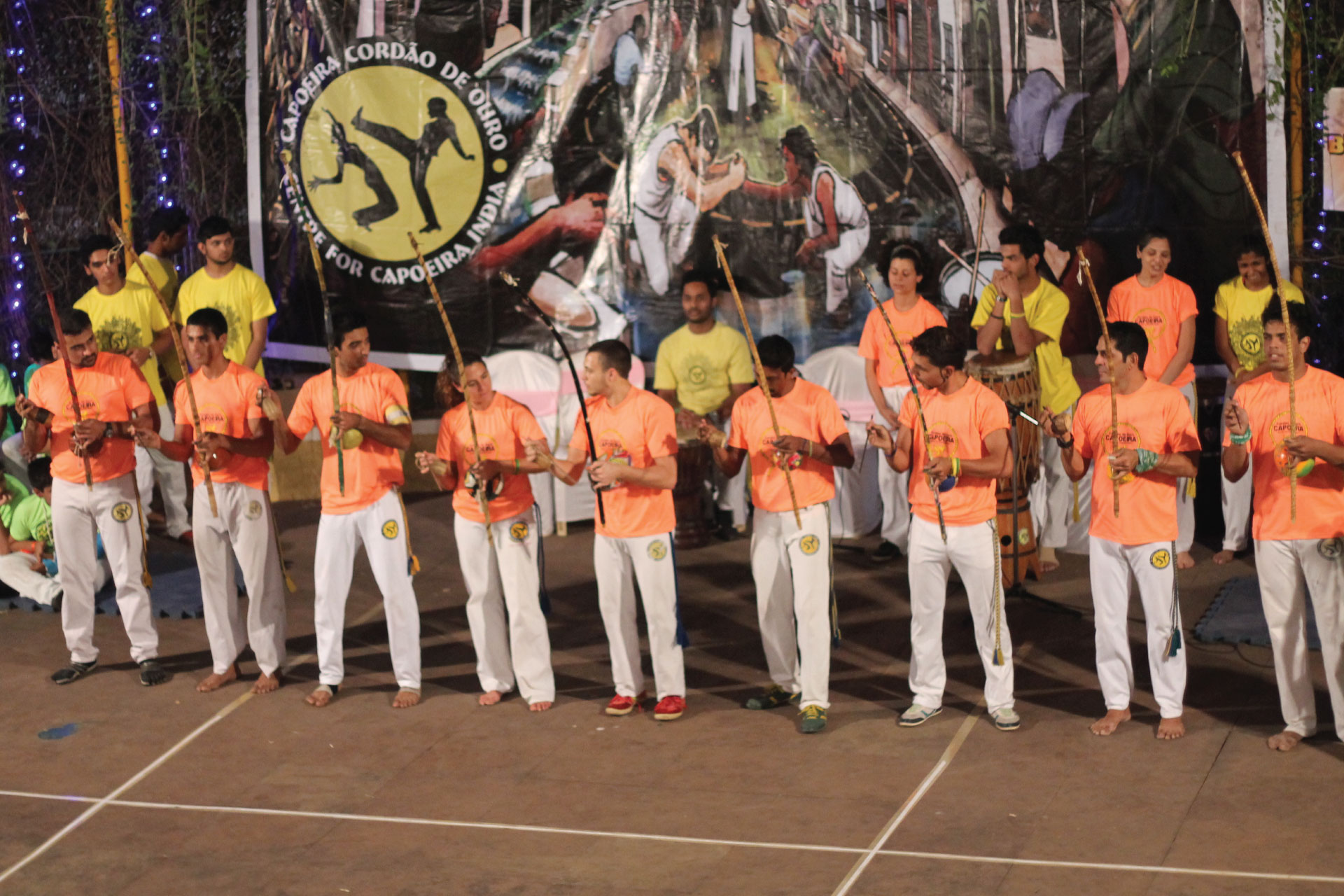In capoeira, music sets the rhythm, the style of play, and the energy of a game. In its most traditional setting, there are three main styles of song that weave together the structure of the capoeira roda.
The main instruments used in capoeira music are berimbau, atabaque, pandeiro, agogô, and reco-reco. A capoeira orchestra, called a bateria, features all these instruments with the bateria leader playing the berimbau and setting the tone for the game.
Not every roda will contain all instruments but the berimbau always presides over the roda. The rhythmic combinations of the berimbau suggest variations in movement style between the two players in the roda. The roda begins and ends at the discretion of the lead berimbau player, who may determine who plays next, can stop games, set the tempo of the music, and calm the players if they get too rough.
Understanding songs in capoeira is a good way to grasp and put into some historical context early Brazilian life and history. If one can identify with the music on a personal level, it goes a long way in adopting the heritage vital in the maintenance of capoeira as a cultural force. The songs of capoeira partly play the role of cultural guide and teacher.



